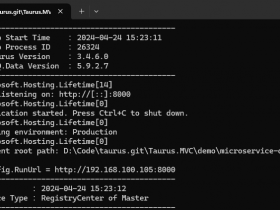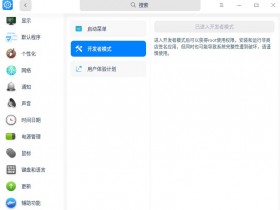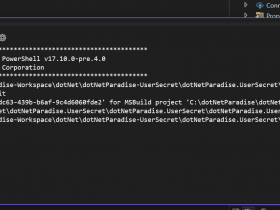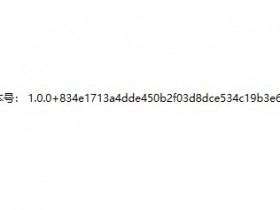- A+
所属分类:.NET技术
一个应用程序中,必须有一个进程,一个进程可同时多个线程协作处理。
同步:单线程,每一步都执行结束并返回结果,下一步处于等待,阻塞程序流
异步:多线程,不需要等待执行结束,可继续执行下一步,形成并行处理,无序的不可预测的执行顺序
前台线程:主线程退出后,子线程直至完成计算。
后台线程:主线程退出后,子线程也会停止退出。
线程的应用
常用的线程创建方式
- new Thread
- ThreadPool.QueueUserWorkItem 后台线程
- delegate 委托 invoke
- Task.Run / Task.Factory.StartNewd
- Parallel
- await / async
ThreadPool 线程池
每个进程都有一个线程池,每个线程池依环境因素分配不同的线程数
由线程池统一管理每个线程的创建/分配/销毁。
// 设置最大线程数 ThreadPool.SetMaxThreads // 用线程池中的后台线程执行方法 ThreadPool.QueueUserWorkItem(方法1);
Task
Action<object> action = (object obj) => { Console.WriteLine("Task={0}, obj={1}, Thread={2}", Task.CurrentId, obj, Thread.CurrentThread.ManagedThreadId); }; // Create a task but do not start it. Task t1 = new Task(action, "alpha"); // Construct a started task Task t2 = Task.Factory.StartNew(action, "beta"); // Block the main thread to demonstrate that t2 is executing t2.Wait(); // Launch t1 t1.Start(); Console.WriteLine("t1 has been launched. (Main Thread={0})", Thread.CurrentThread.ManagedThreadId); // Wait for the task to finish. t1.Wait(); // Construct a started task using Task.Run. String taskData = "delta"; Task t3 = Task.Run( () => { Console.WriteLine("Task={0}, obj={1}, Thread={2}", Task.CurrentId, taskData, Thread.CurrentThread.ManagedThreadId); }); // Wait for the task to finish. t3.Wait(); // Construct an unstarted task Task t4 = new Task(action, "gamma"); // Run it synchronously t4.RunSynchronously(); // Although the task was run synchronously, it is a good practice // to wait for it in the event exceptions were thrown by the task. t4.Wait();
Parallel
多线程并行处理的 Parallel.Invoke,Parallel.For,Parallel.ForEach;无法确保顺序处理。
class Program { static void Main(string[] args) { List<Product> ProductList = GetProcuctList(); // 示例 ForEach 无序处理 Parallel.ForEach(ProductList, (model) => { Console.WriteLine(model.Name); }); // 示例:并行运行方法 Parallel.Invoke(方法1, 方法2, () => 方法3, () => 方法4); Console.ReadLine(); } // demo private static List<Product> GetProcuctList() { List<Product> result = new List<Product>(); // 示例 For 无序处理 Parallel.For(1, 100, index => { Product model = new Product(); model.Category = "Category" + index; model.Name = "Name" + index; ProductList.Add(model); Console.WriteLine("ForSetProcuct SetProcuct index: {0}", index); }); return result; } } class Product { public string Name { get; set; } public string Category { get; set; } }
await / async
创建后台进程并行处理,并取得处理结果。
// 执行 async 方法(后台线程执行) Task<string> _task_result_1 = t1.Func1(); // 主线程不等返回结果,继续往下执行 // 执行方法 string _result_2 = t1.Func2(); // 以上两个方法并行执行 // 取 Func1 的运行结果 string _result_1 = await _task_result_1; // 整合两个方法的运行结果 int _total_ = _result_1.length + _result_2.length;
常用的线程锁
lock
封装自应用级锁Monitor类,需要有线程共享的锁标识,告知其它线程是否等待。
Monitor
程序级锁,于单个应用范围内
// 给要操作的对象加把锁,排他锁 Monitor.Enter(T); // 释放当前锁,允许其它线程使用了 Monitor.Exit(T);
Semaphore
限制可同时访问某一资源或资源池的线程数,允许同时共享的线程数
// 创建时,定义同时的默认线程数和最多线程数 Semaphore sem = new Semaphore(1, 20); // 上锁 sem.WaitOne(); // 释放锁(一次释放线程数) sem.Release(3);
Mutex
系统级锁,内核对象,所以可跨进程跨应用
// 阻挡锁住当前块,其它线程处于等待 // 超时后返回false,不允许其它线程进入 Mutex.WaitOne(timeout); // 释放当前,一个,允许其它线程进入 Mutex.ReleaseMutex();
线程安全
线程安全的类,通过 lock(xxx.SyncRoot) 实现线程同步,如:Array,ArrayList
线程安全的高性能集合类
ConcurrentBag 无序集合
ConcurrentStack 后进先出
ConcurrentQueue 先进先出
ConcurrentDictionary 键值对字典




